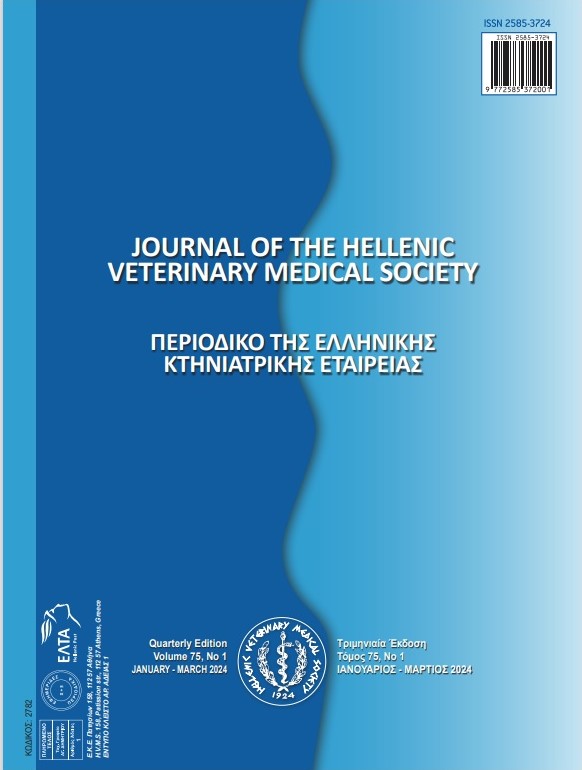Epitheliotropic T-cell lymphoma in Syrian Hamster (Mesocricetus auratus)

Abstract
Lymphomas are neoplasms characterized by the clonal proliferation of malignant lymphocytes, are considered one of the most common tumors recognized in hamsters. The objective of the present work is to describe a case of cutaneous T-cell lymphoma (CTCL) in a Syrian hamster kept as a pet in Paraguay, diagnosed by histopathological and immunohistochemical techniques. We report the case of a 1-year-old, male, pet Syrian Hamster (Mesocricetus auratus), that presented scabs, ulcers, erythema, crusting, and hyperkeratosis, with a case evolution of approximately 20 days. Days after the inspection the animal is found dead, and the body is subjected to post-mortem examinations. Histopathologic analysis with hematoxylin-eosin and inmunohistochemic assays for CD3 and CD79 lymphoid markers and ki-67 cell proliferation are performed on skin sections, confirming the diagnosis for cutaneous T-cell lymphoma. Clinical signs and skin lesions coincide with cited literature, and confirmation through inmunohistochemical assays offer a better diagnosis. To date, there is no known cause nor treatment for cutaneous T-cell lymphoma in hamsters, and euthanasia is considered for animal welfare.
Article Details
- How to Cite
-
Vetter, J., Maidana, L., De Oliveira, T., Méndez-Morán, D., Dacak, D., & Heurich-Suárez, G. (2024). Epitheliotropic T-cell lymphoma in Syrian Hamster (Mesocricetus auratus). Journal of the Hellenic Veterinary Medical Society, 75(2), 7597–7602. https://doi.org/10.12681/jhvms.35335
- Issue
- Vol. 75 No. 2 (2024)
- Section
- Research Articles

This work is licensed under a Creative Commons Attribution-NonCommercial 4.0 International License.
Authors who publish with this journal agree to the following terms:
· Authors retain copyright and grant the journal right of first publication with the work simultaneously licensed under a Creative Commons Attribution Non-Commercial License that allows others to share the work with an acknowledgement of the work's authorship and initial publication in this journal.
· Authors are able to enter into separate, additional contractual arrangements for the non-exclusive distribution of the journal's published version of the work (e.g. post it to an institutional repository or publish it in a book), with an acknowledgement of its initial publication in this journal.
· Authors are permitted and encouraged to post their work online (preferably in institutional repositories or on their website) prior to and during the submission process, as it can lead to productive exchanges, as well as earlier and greater citation of published work.


